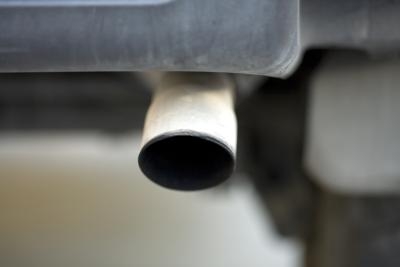
Since 1975 most cars have included catalytic converters, which remove the most dangerous pollutants from engine exhaust before it is passed to the muffler and out the tailpipe. They do this by passing the exhaust through many clay sheets containing platinum and rhodium. The pollutants bond to these elements and react to form less dangerous molecules which are then emitted. There are several dangers associated with catalytic converters, all of which are avoidable.
Catalytic converters get very hot when a car is running, with their exteriors reaching temperatures of 800 to 1,000 degrees F when the engine is working under extremely heavy load conditions. If the car has a partial failure in its ignition system, unburned fuel will reach the converter and push temperatures into the 1,200 to 1,400 F degree range. This presents a clear danger to anyone working underneath the vehicle. To avoid being severely burned, always allow a catalytic converter time to cool before working on it or on anything near it. As a relatively dense structure, it will take longer to cool than other parts of the car.
The heat produced by a catalytic converter can be enough to ignite dry tinder. In most cases this only happens when a misfiring spark plug or fuel injector results in unburnt fuel reaching the converter. The converter burns the fuel off, raising the temperature high enough to be a fire risk. Never park a car over any dry leaves or brush, as these could be lit on fire by this heat. Be careful not to spray undercoating on the converter, as this could also ignite under high heat conditions and damage the vehicle.
Catalytic converters remove carbon monoxide, a potentially deadly gas, from car exhaust. If the converter is clogged it may not fully accomplish this. A catalytic converter also must warm up before it starts to work, meaning that even cars equipped with one should never be started in enclosed spaces or household garages. The gas is colorless and odorless, making it a danger to anyone connected to that area by ventilation.